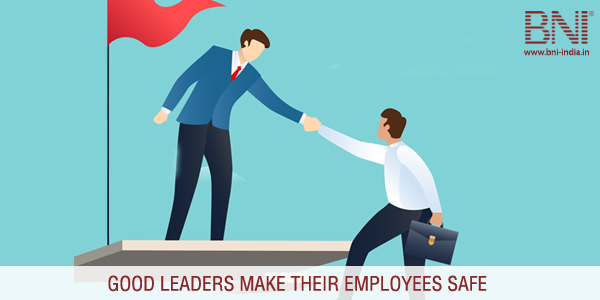“When we feel safe inside the organisation, we will naturally combine our talents, strengths & work tirelessly to face the dangers outside and seize the opportunities” Simon Sinek, British-American best-selling author, motivational speaker & organisational consultant tells people why good leaders are those who make their employees feel safe.
In an inspirational Ted Talk, “Why Good Leaders Make You Feel Safe” Simon throws light on some exemplary leaders who choose to look after their employees at any cost.
He begins the talk with a touching example of a military leader risking his life to save his soldiers and kissing one of those who he saved before he resumed saving more.
This very selfless act, Simon points out, was backed by a very deep feeling or sense of love, which one doesn’t often see in corporate workplaces.
One of the key factors, Simon says, that make leaders do such selfless deeds and more importantly influences other people too to do the same is the environment. Leaders who are regarded as heroes are motivated by the idea which is “They would have done it for us” This deep sense of trust & cooperation, which cannot be taught and are just mere feelings, can make one do remarkable things.
Simon charts out the history of the man who around 50000 years ago was living in treacherous conditions-like bad weather, lack of resources, wild animals etc and so man evolved as a social animal. The sense of a community or tribe made people safe, there was always someone watching their back. And the leader of the tribe will step up and face the risk rather than sacrifice someone from his tribe.
Simon points out that if employees don’t feel safe or don’t trust their leaders they spend their time and energy in just protecting themselves from each other, which does not help them or the company to grow.
He explains an interesting analogy of leaders being like parents. Parents will never lay-off or quit on their children when they don’t perform. They’ll find a way to solve the problems their children are facing or train them better.
Simon ends with another great example of a business leader whose manufacturing company lost 30% of their deals overnight and had to save around $10 million to stay afloat. Instead of laying off employees, as most leaders would do, he chose a furlough program where every employee had to take 4 weeks of unpaid vacation, and not necessarily consecutively. This boosted morale and infused an environment of trust & cooperation. People were stepping forward to trade with each other. Employees who could afford an unpaid vacation more would trade with those who could afford it less.
Emphasizing the difference between leadership and authority, Simon closes by saying, “Leadership is a choice, it is not a rank.”
